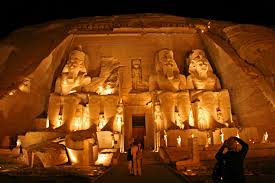PRAGUE
Beautiful city that I visited twice, the first during a trip in the mid-80s by train from Trieste, Vienna, Prague and Budapest and the second time around 2012 during a trip to Central Europe through various countries and cities.
I was immediately struck by the beauty of its buildings, by the square with the astronomical clock tower which is a true icon for its beauty but also for the extraordinary technique that allows a series of statues to turn in the upper part as the hours strike.
Further ahead there is the statue of a famous Protestant monk and the Gothic cathedral with two bell towers, one shorter than the other.
Not far away is the powder gate tower which gives access to the old city and where the emperor passed for his coronation.
There is a mighty castle-fortress on the hill, residence of the president of the republic and before the Bohemian kings, it is a colossal structure with spaces for a total of 45 hectares with various palaces, courtyards and also houses the cathedral of St. Vitus which contains the tombs of the Bohemian kings and of Saint Wenceslas as well as the crown jewels. which can be reached after crossing the Charles Bridge which connects the city with Mala Strana, the district on the other bank of the Vltava, a bridge embellished with a series of statues on its sides and by various painters who lend themselves to making portraits.
Behind the castle is the golden alley, a narrow street with low colored houses where the castle guardians and their families lived.
Then Kampa Island on the river which is a green oasis with lawns suitable for picnics and relaxation.
Boats sailing on the Vltava River host tourists for an interesting itinerary.
Prague is also famous for its breweries (beer was invented by the Czechs precisely in Pilsen where there is a large factory that has been contesting the trademark of the American Budweiser for decades and it seems that they have finally found an agreement) and in general for its atmosphere which on the first trip was very sad, it was in full communist regime which hit hard after the 1969 rebellion when Dubcek and other politicians had managed to create a more democratic government for about a year, there was the martyrdom of the young Jan Palach who gave himself fire in the square when Russian tanks arrived to quell the rebellion and restore the old regime loyal to Moscow. The Czechs dedicated a cross to him which emerges from the cobblestones in Wenceslas Square near the National Museum.
There are traces of the famous writer Franz Kafka, a strange statue of a headless man, with a hole in his body and a little man on his shoulders and then various ancient cafes that bear his name and then his house.
Also in the upper part there is the small Jewish cemetery which houses thousands of bodies which are stored in layers in the underground floors.
There is an ancient and evocative Spanish Jewish synagogue in Moorish style and the dancing house which recalls the Fred Astaire-Ginger Rogers couple.
Then a large building which is the National Museum and the Opera House. Prague is famous for its roofs believed to be golden as the color tends towards yellow.
One thing that struck me recently was reading that the income of the Czech Republic is one of the highest in Europe and that Prague is particularly rich.
But we must remember that it was already rich and industrial before the advent of communism which actually slowed down its development which resumed after the end of the regime.


















Comments
Post a Comment